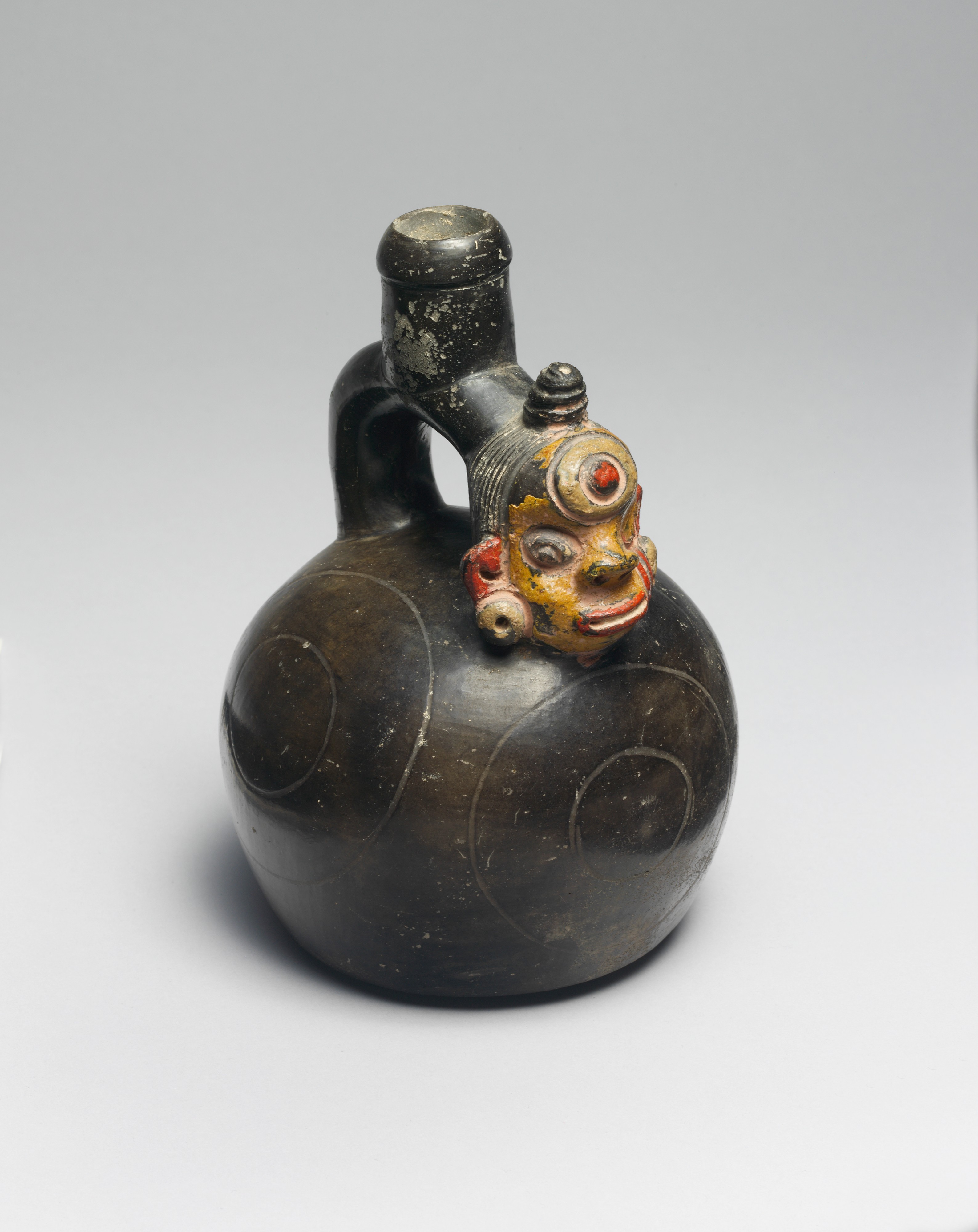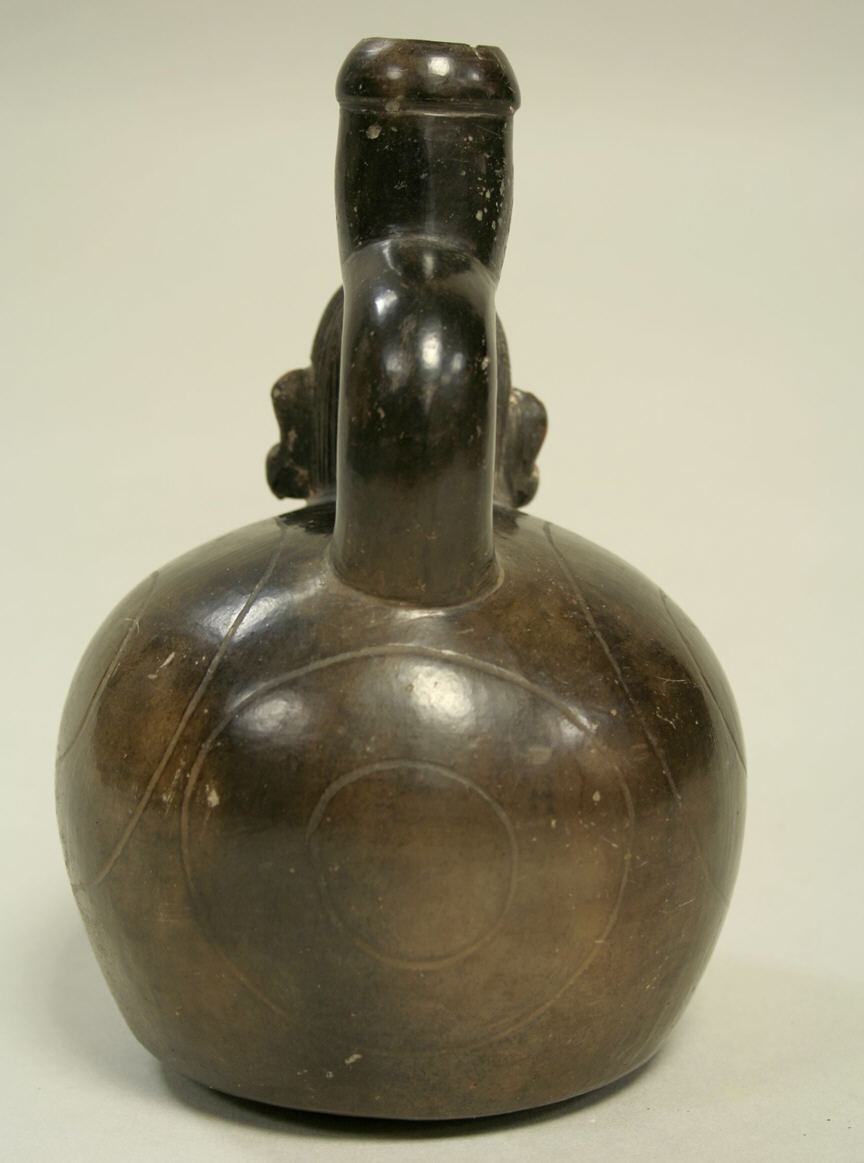Bottle, Head on Spout
Not on view
Bowls and bottles in various shapes and sizes are consistently found among the burial goods that ancient Peruvian peoples took with them to their graves. Both the bottles and bowls contained foodstuffs, but while the contents of the bowls remain more or less intact, even centuries later, due to the extremely dry climate, the bottles are usually empty. They undoubtedly contained a liquid, perhaps water. In the arid region on the southern Pacific coast of Peru where this bottle was found, the valleys had only sparse river water from the Andes, but groundwater oases provided enough supplemental moisture to support communities of some size and moderate wealth, particularly in the Ica and Naca valleys. This beautifully rounded and finished bottle is an example of the fine ceramic vessels produced in the region in the first millennium B.C. The significance of the unusual grotesque head at the junction of one of the branches of the stirrup spout is uncertain. The head is painted yellow and has a wide red mouth, a large pug nose, red ears with plump, circular earrings, and a topknot. On its forehead is a large ornament decorated with concentric circles around a red center. Most mysterious of all, it is missing an eye.
Due to rights restrictions, this image cannot be enlarged, viewed at full screen, or downloaded.
This artwork is meant to be viewed from right to left. Scroll left to view more.




